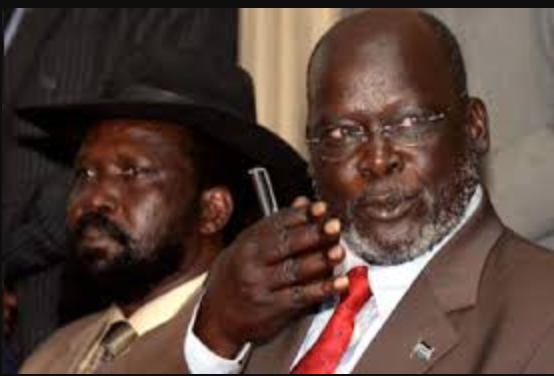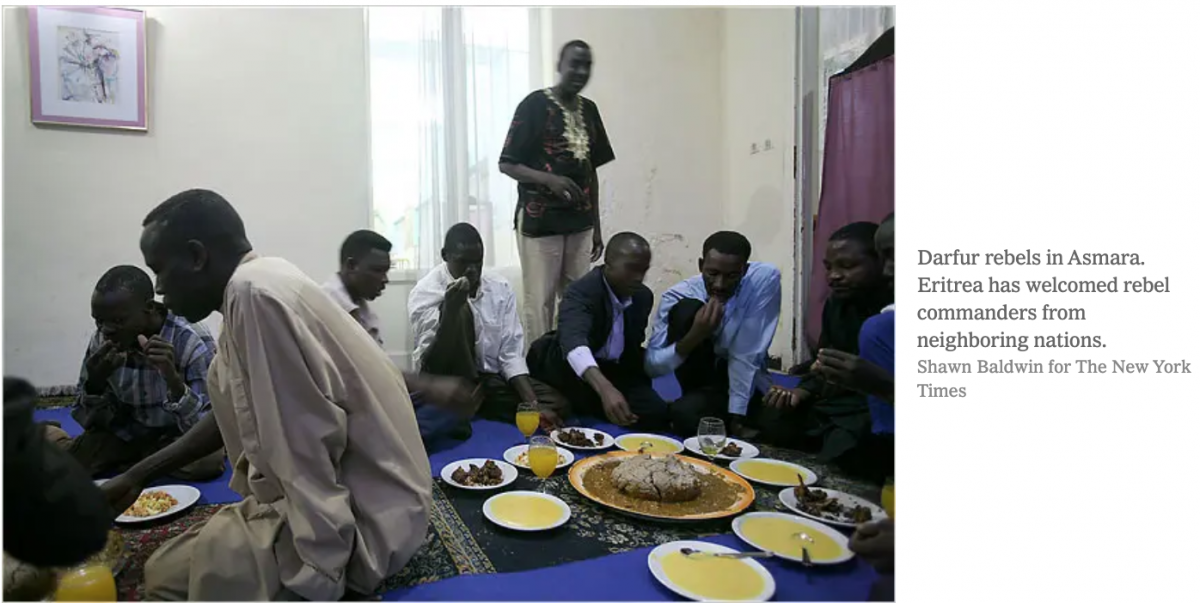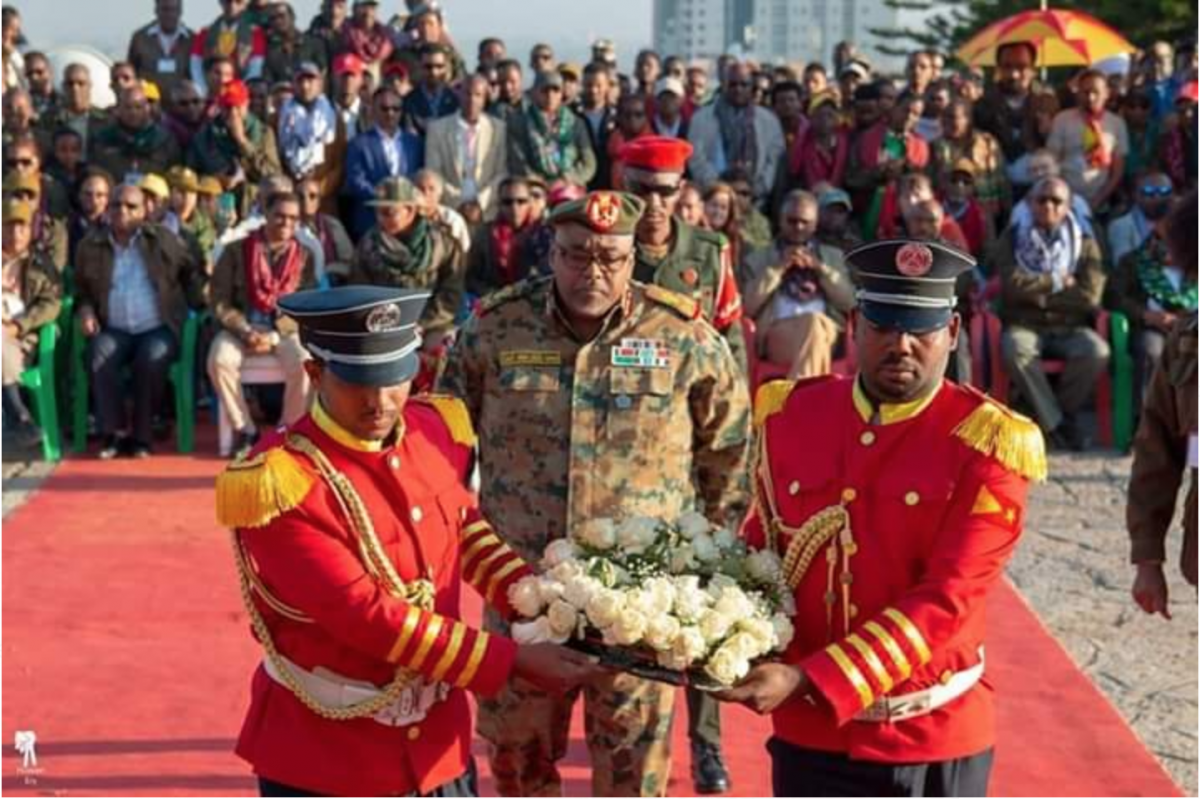Sometime between his first interview focusing on international affairs and the second pinpointing on Eritrea, somebody slipped Eritrea’s President Isaias Afwerki some truth serum and he couldn’t stop telling us how spectacularly he had failed in the past 28+ years. It was like an opposition leader had body snatched him: he told us that every sector of Eritrea had failed. The education system has, at best, a 75% fail rate: it doesn’t produce employable people; there is no electricity in the country; drinking water is too expensive in the city, not available in villages; there are no industries, even the colonial ones we inherited don’t function; our fishing industry is dead. As for our ports: “does Massawa, so-called Pearl of the Red Sea exist? No it does not. Does Asab exist? No it does not.” One wishes that he had also imbibed of the truth serum when he was discussing the failure rate of his foreign policy in the past 28 years. Since he didn’t, we will him out.
What has come to define Eritrea’s Foreign Policy is the corruption of a small but heavily misguided ideology inserted into the ruling party’s PFDJ’s 1994 National Charter back when we were still in our We Defeated Superpowers! mindset: “In order to preserve the peace and harmony we acquired after a long struggle, it is essential that we strive for peace and stability at both regional and global levels, notwithstanding our limited capabilities.” What this has meant is to punch above our weight, which is risky enough, but when you give this total punching authority to Isaias Afwerki, a very tactical-no-strategy man who is heavily (solely?) influenced by spite, then the results could be nothing but disastrous. Specially since there is no parliament, no private press to conduct assessments or oversight. There is zero ability to learn from mistakes since the decision-maker is, by definition, all-knowing. There was no statistical probability that the decisions could be, even by chance, right half the time.
Let’s look at the carnage:
1. South Sudan: Eritrea was involved with South Sudan as early as 1994, when it kicked out Sudan’s ambassador and turned it over to the Sudan People’s Liberation Army(SPLA)– literally a year after Eritrea became an official State.

SPLA was always in a state of tension between those who wanted South Sudan to remain part of reformed Sudan and those who wanted it to be fully independent. Isaias, a man who has not met an African colonial treaty he hasn’t liked, was for keeping Sudan One. After the death of SPLA leader John Garang, there was hardly a voice for unity within the movement and in the referendum South Sudan held, the vote for secession was supported by 99% of the people. You would think this would be enough to humble Isaias: but he is in the same state of mind he was when he refused to join its celebration of right to self determination 9 years ago: bitter.
2. West Sudan & East Sudan: In Darfur Sudan, although Eritrea has no border with West Sudan (“notwithstanding our limited capabilities”), Isaias inserted himself into Sudan’s affairs , mostly as “Our-Man-On-The-Ground” for Libya and Qatar another State (now an enemy state) that likes to punch above its size, but has a bottomless pit of oil to support its ambitions.

So for years, Isaias dragged Eritrea into the mess, making frequent treks to Libya and Qatar to discuss “bilateral and regional issues” (code for Darfur and Somalia) In the end, proving his years’ of investment into the issue were entirely worthless, the new government of Sudan has kept him at a distance as it attempts to solve its internal affair. In East Sudan, Isaias Afwerki had what, on the surface, appears to have been a spectacular success: he leveraged his influence over the Beja Congress and the Free Lions–representing the marginalized East Sudan–to get them an agreement for a representative government. In reality, because he is a very tactical man, all he got (for himself) by forcing the removal of Humed Hamed, is an opportunity to have his own hand-selected Governor of Eastern Sudan State of Kessela, all the more to facilitate contraband economy to and from Eritrea and to look the other way when his new friends in East Sudan were in the human smuggling business. (See report of the Commission of Inquiry on Eritrea.)
But wait: last year’s Revolution in Sudan had its own dynamics which resulted in the very popular Humed Hamed returning to Kassala as Governor. And, oh, here he is attending the TPLF @45 celebration in Mekele, Tigray: that same organization we keep being told is dead and never coming back. Spiteful Isaias will now waste a lot of Eritrea’s resources and energy studying this picture and antagonizing the new Sudan government: yes, he is THAT petty.

3. Ethiopia: Isaias Afwerki and his supporters, aka the Diaspora “We Are Him, He Is Us” (or, in Tigrinya, Nehna Nsu, Nsu Nehna (NNNN)) have Faustian agreement: he will demand that they annually and on time pay 2% of their net income and unconditionally support whatever causes strike his Don Quixote mind; in exchange, they will faithfully pay 0.5% of their annual income every other year and get to visit their half-finished homes (teetering on the edge of collapse in the memorable description of Truth Serum Isaias) in Asmara every other year. Their contributions, plus revenues from Eritrea’s mines, went on to arm and train a group of Ethiopian “resistance fighters” including those from Tigray (TPLM/DMHT), from Oromia (OLF), from Amhara (Gnbot-7), from Ogaden-Somali State (ONLF) and even from Benishangul-Gomez. Recall that these organizations did not have much in common–some were Federalist, some unionists, some had single focus on their region others on the nation. Some even expressed the view that Eritrea is part of Ethiopia. But to Tactician Isaias, that didn’t matter: what mattered (only thing that mattered) was that his spite was satisfied: the Weyane had to be punished. But what is the outcome now?
Recall that the Tigray People’s Liberation Movement (TPLM/DMHT) had split, with one faction led by Molla Asghedom returning to Tigray during the Hailemariam Desalegn era. Recall that the last holdout returned after Abiy Ahmed’s highly successful Reconciliation Campaign. Recall that on the eve of Abiy Ahmed’s ascendancy to be Ethiopia’s Premiere that the TPLF was very unpopular even among Tigrayans with its leaders on an apology tour. Recall that Abiy Ahmed received an exuberant welcome when he visited Mekele. Given Isaias Afwerki’s tactical mindset, the only question was: how will he waste this? Easy: he and his NNNN went on a “Game Over!”, “you are encircled!”, “the end is near!” chant which pushed not only the people of Tigray to the bosom of the TPLF but, astoundingly, the armed group he had wasted Eritrea’s treasure on, the TPLM, also declared it was joining the TPLF!
Perhaps things are better with the OLF? Not really. All the elders like Dawud Ibsa, Hailu Gonfa are men without portfolio in Abiy’s Oromia State which is the monopoly of his party and the emergent OFC. The much celebrated General Kemal Gelchu lasted all of six months in the government. How about the Unionists, the Ginbot 7, Arbenoch with their politics of nostalgia of an Ethiopia that never was for most Ethiopians? They are either out of step with modern Federal Ethiopia or they have been pre-empted by even more uncompromising unionist and are now struggling just to get people to attend their meetings in Amhara, Oromia, Arba Minch. But they are a registered national party so maybe they will sweep the 2020 elections. And the Ogaden National Liberation Front? Well, after their, um, rehabilitation, they have been taught that Ogaden is just one (small) part of Ethiopian Somali State and they should hurry up and think bigger, so now they are grand Ethiopianist, challenging Ginbot-7 in their Greater Ethiopia flag-waving.
4. Somalia: All of the above miscalculations merely bankrupted Eritrea, and are (hopefully) reversible. But the one that cost Eritrea the most–in terms of irreversible reputation, sanctions, exodus, and a deepening economic hole–is Isaias Afwerki’s adventures and miscalculations in Somalia. Between the collapse of the Siad Barre regime and up until the UN decided to be serious about Somalia, the country was a free-for-all where everybody was trafficking in arms to support their faction. This included the United States, Europe, the Gulf States, Ethiopia, Kenya and, although not a neighbor (“notwithstanding our limited capabilities”) Eritrea. At some point, the UN blew the whistle and said that the international community is going to support the Transitional Federal Government and everybody should line up behind them. Everybody did: except Eritrea (openly) and its funding sources (most likely Qatar, behind the curtain, our former trusted mediator in our dispute with Djibouti and now our eternal foe.)
At every stage of the fork-on-the-road, Isaias was on the losing side. When the Islamic Court was defeated by Ethiopia, he was with the Islamic Court. When the Islamic Court reconstituted itself (in Asmara, no less) as the Alliance for the Reliberation of Somalia (ARS) and then split into two, he was with the losing side (ALS-Asmara.) When the whole world lined up behind ALS-Djibouti, he dismissed it and said he was for the entire “Somali Resistance” including Al-Shabab (see video below). When the Transitional Federal Government was established, he mocked it as incapable of having any control over anything but “Villa Somalia.”
Suffice to say that the current Prime Minister of Somalia is the product of ALS-Djibouti, TFG, and calls his office Villa Somalia. And what happened to all the Somali politicians that Isaias wasted Eritrean treasure and reputation on? The ALS-Asmara melted away and the other “Somali resistance” (Al-Shabab) pledged allegiance to Al-Qaeda, blew up Uganda and Kenya, and to this day has made Somalia ungovernable by acts of “resistance”, which everybody in the world calls terror.
After this long, uninterrupted record of miscalculation and terrible judgement, what is next for Isaias Afwerki? Will he humble himself and stay focused on repairing the damage he has caused in Eritrea? No. He still has a magic card with the Djibouti “resistance” in Eritrea. But the big game is still Ethiopia: as he publicly disclosed in his last TV interview (helpfully translated into English by his Minister of Twitter, Yemane Gebremeskel): he is not going to fold his hands and just watch, hell no. Notwithstanding our limited capabilities he intends to pick winners-and-losers in Ethiopia, as it prepares for its national election in 2020. He has gotten some pushback from Ethiopian intellectuals and even a diplomat or two. He won’t stop, he can’t stop: so it is only a matter of time before he loses Abiy Ahmed.


Leave A Reply